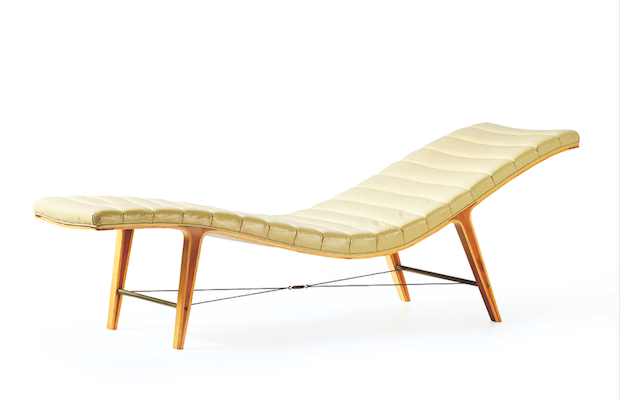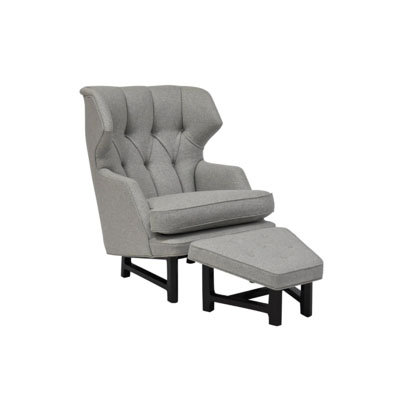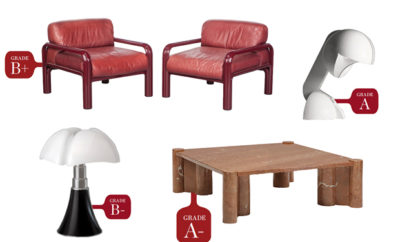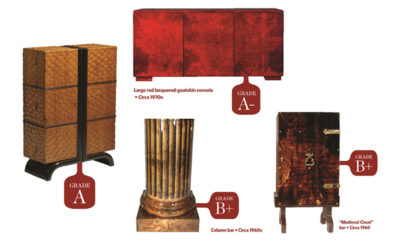
Design
Edward Wormley: Overlooked But Not Forgotten
TROY SEIDMAN EXAMINES THE ELEGANT AND EASY-GOING DESIGNS OF EDWARD WORMLEY, WHO BROUGHT A MODERNIST INTERPRETATION OF DESIGN CLASSICS INTO MID-CENTURY AMERICAN HOMES
THE PHOTO APPEARED IN PLAYBOY in July 1961: a group shot showing six designers posed with their creations. It’s an enduring image of the titans of mid-century American design, among them George Nelson, Eero Saarinen, Harry Bertoia, Charles Eames, and Jens Risom. A testament to the success of American modernism, all of those designers have goods that are still in production today (by Herman Miller or Knoll, among others) and are easy to purchase.
The anomaly in the photo is Edward Wormley (1907– 1995). On Instagram today there are more than 330,000 images tagged Eames, while only slightly more than 2,600 reference Wormley. There are no Wormley products available through Design Within Reach, and knock-offs are essentially unheard of. Wormley does, however, have a major presence on the vintage, or secondary, market. More than 1,600 pieces associated with him are listed on 1stdibs, nearly a thousand more than for Ray and Charles Eames. So why doesn’t Wormley share the same high profile as his Playboy colleagues? It can be explained partly by the operation of furniture maker Dunbar. Unlike some of its contemporary rivals—notably Herman Miller and Knoll—the Indiana-based Dunbar, which produced the vast majority of Wormley’s designs, resisted standardization and mass production. Second, like other American high-end designers whose work was made in more limited numbers, there has simply been less scholarship on Wormley.
He began designing for Dunbar around 1931 and, with a short hiatus during World War II, continued to do so until his retirement in 1968, spending just over three decades as head of design. The 1950s were arguably his creative and commercial zenith. Unlike those of his Playboy mates, his designs were primarily “made to order” and did not involve such standardization methods as molds or assembly line production. While Dunbar created some incredible pieces using laminated wood, it avoided plastics and concentrated on elaborate finishes and such expensive materials as Tawi wood, brass hardware, marble, and “silk from Siam.” Wormley’s upholstered pieces are some of Dunbar’s finest creations—from his modern interpretation of a tufted Chesterfield sofa to an airy sculptural sofa appropriately named La Gondola.
Many of the Dunbar pieces that are less memorable today have lost their impact because the pared-down aesthetic they introduced has become the norm. It is worth pointing out that prior to joining Dunbar, Wormley had studied to be an interior decorator and had reproduced eighteenth-century furniture for a department store—experiences that gave him a commercial sensibility and an understanding of historical furniture that informed his entire career.













